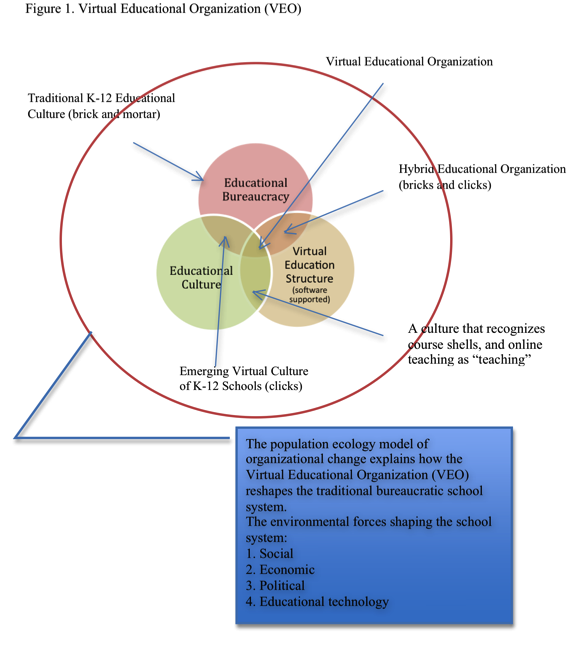| << Chapter < Page | Chapter >> Page > |
A virtual educational organization is emerging from the traditional bureaucratically arranged organization described by Weber (1921) and Thompson (1961). Weber’s description of the 19 th century bureaucratically arranged organization has been the standard by which all models and theories of organization have been compared. In general, all organizations follow the maxim that any organization is a social structure “created by individuals to support the collaborative pursuit of specified goals” (Scott, 1998, p. 10). However, from the mid twentieth century to the present the study of organizational characteristics has generated a body of literature and theoretical analyses of organizations as rational, natural, and open with permutations and extensive descriptions that expanded, and further refined, theories of organization as structuralist, contingent, and layered. This case study presents a theoretical description that extends the bureaucratically arranged educational organization to virtual.
The population ecology model of organizational change explains the external feedback loop of social, political, economic, and, in this case, educational technology pressures reshaping the American educational system. A central theme of this form of organizational change is that “environments differentially select organizations for survival on the basis of fit between organizational forms and environmental characteristics” (Scott, 1998, p. 115). The population ecology model extends the theoretical premise that the virtual educational organization is a more open natural system being shaped by social, economic, political, and educational technology forces that require school systems to “change their characteristics through adaptation over time” (p. 115). Further, a culture is developing that reflects the growing influence of technology. As Schein (1985) described culture, it is the “emerging assumptions and beliefs that are shared by members of an organization, that operate unconsciously, and that define in a basic ‘taken-for-granted’ fashion an organization’s view of itself and its environment” (p. 6). This organization is in the process of changing the cultural norm of teaching and learning by adopting a structure for virtual education.
In this study it appeared that the virtual educational organization was emerging (causing disruption to the bureaucratic organization) as an integrated system within the traditional bureaucratic educational organization. The virtual educational organization was not an emerging entity unto itself but an emerging structure evolving and integrating with the present day K-12 school district.

The Virtual Educational Organization is a system of education designed around software that will be experienced by the teacher and student as formal structures for teaching and learning. These structures are only now being designed and built by the school district as it adopts the technology and software tools for delivery of learning supported by the educational organization.

Notification Switch
Would you like to follow the 'Ncpea handbook of online instruction and programs in education leadership' conversation and receive update notifications?